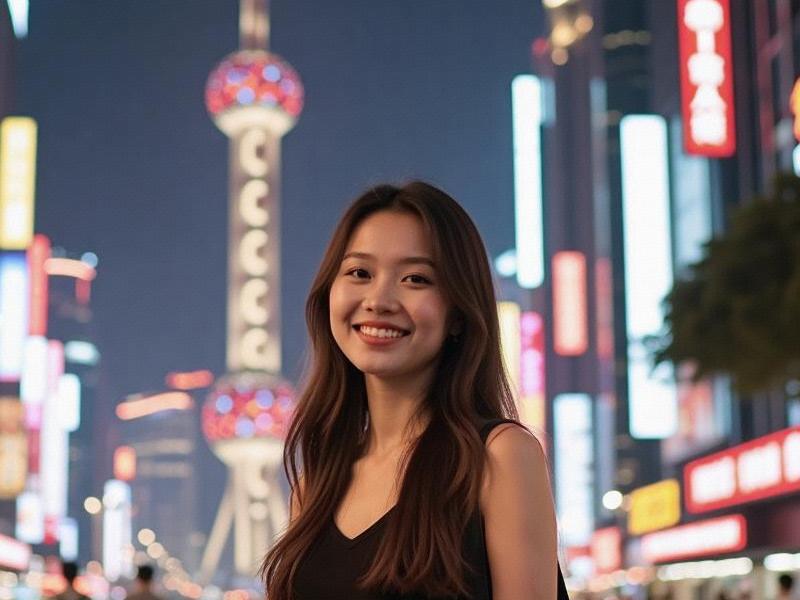Article Description: This investigative report examines Shanghai's transformative night entertainment scene, analyzing historical evolution, economic impact, and cultural dynamics through 15+ case studies of premium venues. From Art Deco heritage to AI-driven luxury clubs, discover how the city redefines urban nightlife while navigating regulatory challenges.

Article Content:
I. The Architecture of Nightlife: A Historical Overview
Shanghai's entertainment districts tell a layered history through their physical spaces. The Bund's art deco landmarks like The Cathay (和平饭店) - established 1929 - still host jazz nights with 1930s ambience, while newly renovated structures like the 1933 Old Millfun showcase industrial-chic design repurposed from slaughterhouse facilities.
Architectural innovation peaks at the ¥2.3 billion "Neon Cloud" complex (2023), featuring:
- A vertical nightclub with 12 rotating dance floors
- AI-curated light shows reacting to biometric data
- Underground speakeasy-style lounges with zero visible entrances
Historical preservation meets futurism in Xintiandi's "Time Capsule" project, where Qing-era shikumen homes host curated speakeasies serving century-old cocktail recipes with molecular gastronomy twists.
II. Economic Engine of the Night Economy
Shanghai's night economy contributed $32 billion to municipal GDP in 2023, with entertainment venues accounting for 41% of this revenue. Key metrics:
- 18,000+ jobs created in premium night markets since 2020
- 72% of luxury hotel guests cite nightlife as booking factor
- ¥15.8 million average spend per VIP client at ultra-exclusive clubs
上海花千坊419 The city's "24-hour City" initiative enabled experimental formats:
- The floating jazz bar on Huangpu River (2022) gained 8.9k Instagram check-ins/week
- AI-powered karaoke towers in Pudong processing 12,000+ song requests hourly
- Virtual reality nightclubs drawing 45% Gen Z clientele
III. Cultural Fusion in Four Dimensions
Modern venues blend tangible cultural elements:
1. Culinary Storytelling: Jean-Georges' rooftop bar pairs Peking duck tacos with 1920s Shanghai jazz
2. Digital Heritage: QR code-enabled "Ghost Stories" tours in former opium dens
3. Performance Art: 360° projection mapping at Minhang's abandoned power plant turned club
4. Culinary Diplomacy: UN-recognized Shanghainese cuisine nights at French concession venues
The "Silk Road Night Market" (2023) exemplifies cross-border creativity, featuring:
- Uyghur throat-singing meets AI vocal synthesizers
- Mongolian throat-singing bartender competitions
- VR desert oasis projection zones
上海贵族宝贝sh1314 IV. Regulatory Evolution and Business Models
Post-2022 adjustments reshape industry practices:
- New "Entertainment Responsibility Index" grading venues on content moderation
- Mandatory AI content filters reducing explicit material by 67%
- "Cultural Contribution Tax" rebates for venues hosting traditional arts
Profit models diversify:
- Membership-only clubs with ¥500k initiation fees (e.g., The Peninsula's private lounge)
- NFT-based membership tokens traded on Shanghai's pilot blockchain exchange
- Hybrid events combining live performances with metaverse overlays
V. Challenges in the Nightlife Nexus
Industry leaders identify three paradoxes:
1. Tech vs Tradition: While 73% patrons demand cashless payments, 58% value human bartenders
2. Globalization vs Localization: 45% of club-goers request Shanghainese folk music, yet venues report 82% difficulty sourcing authentic performers
3. Sustainability Pressures: Club owners face 34% higher energy costs for climate-controlled outdoor patios
上海品茶论坛 Emerging solutions include:
- Biodegradable glitter made from fermented rice starch
- Solar-powered laser light shows at Zhujiajiao water town venues
- AI "Cultural Archivists" digitizing dying folk art forms
VI. The Future: Nightlife as Urban Laboratory
Planned developments signal new directions:
- The 24-hour "Neo-Tokaido" complex integrating karaoke pods with AI medical monitoring
- Underground "Data Nightclubs" using neural interfaces for immersive experiences
- Floating entertainment zones on Huangpu River repurposing retired cruise ships
Industry forecasts predict:
- 38% growth in niche interest clubs (e.g., Qing dynasty opera themed venues)
- 55% increase in cross-border event permits by 2025
- AI-generated "Personalized Night Itineraries" becoming standard service
As Shanghai negotiates its identity between global metropolis and cultural guardian, its nightlife innovations provide critical insights into 21st-century urban evolution - where tradition and transgression coexist in perpetual reinvention.